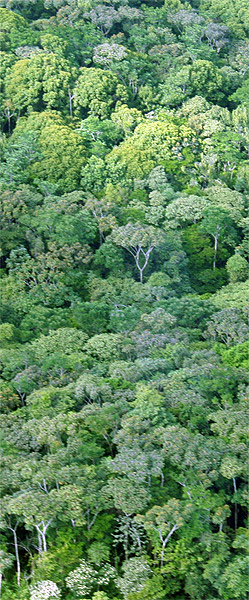

| Welcome |
| A Neotropical Rainforest |
| Nicaragua |
| Rainforest Research |
Plants: |
| Insects: |
| Bullet Ants |
| Leafcutter Ants |
| Birds: |
| Mammals: |
| Howler Monkeys |
| Three-toed Sloth |
| Baird's Tapir |
| Jaguar |
| White-lipped Peccary |
| Agouti |
| Reptiles and Amphibians: |
| Red-eyed Tree Frog |
| Poison Dart Frog |
| Helmeted Iguana |
| Eyelash Viper |
| Terciopelo Viper |
| Spectacled Caiman |
| American Crocodile |
| Human Systems: |
| Rainforest Boy |
| Rainforest Girl |
| Traditional Ecological Knowledge |
| Deforestation |
| Rainforest Research |
|
Rain forests occur in regions of the world where over 100 inches (2500 mm) of rain falls annually. Two distinct classes of rain forests exist: Temperate and tropical. The tropical rainforest the most diverse ecosystem on Earth, with an estimated 70% of the Earth's species. "Neo" tropical rainforests are those found in the New World. Ranging from Mexico to Bolivia and Brazil, the Neotropical rainforest is found where temperature and precipitation create conditions for rapid plant growth (water and warmth) and long growing seasons (no extended dry or cold periods). Great resources exist for those who want to study the Neotropical Rainforest. The best is a book by Dr. John Kricher, A Neotropical Companion. If you are interested in protecting the rainforest, you should read Dr. John Vandermeer and Dr. Ivette Perfecto's book, Breakfast of Biodiversity.
Suggested Reading: A Neotropical Companion, by John Kricher. The second edition is much updated. Breakfast of Biodiversity, by John Vandermeer and Ivette Perfecto.
|

Copyright Gerald R. Urquhart
Michigan State University
Students and teachers have permission to quote text and use images from this website in class assignments. Images may be used in classroom and academic presentations with notification of author. All other use should request permission.
Virtual Rainforest development supported by grant #0815966 from the

 The Neotropical Rainforest
The Neotropical Rainforest
